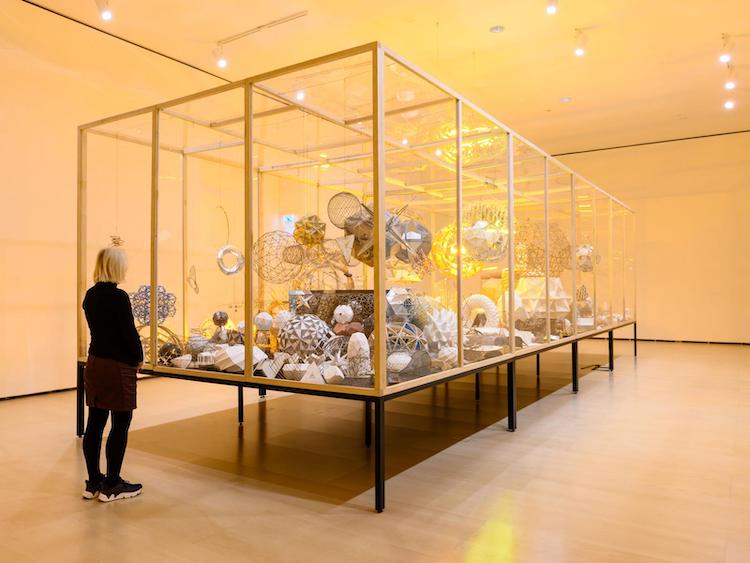The Italian designer furniture firm Cassina has organised on its Instagram account(@CassinaOfficial) a series of live conversations with guests from the world of design and art. Patricia Urquiola, artistic director of Cassina, plays the role of interviewer for the occasion, or rather, of conversation host. The first of the talks in this series was on Thursday 30 April with the Danish artist Olafur Eliasson.
In it, the Spanish designer and the Danish artist reflect on the future of art and design after the coronavirus and they do so from two perspectives: that of the artist and that of the spectator or consumer. How will this situation influence the way in which we shape the world? How will this new perspective affect the world of art and design?
Connected by symbiotic relationships
The talk is structured through the artist’s last 3 exhibitions in Zürich, Bilbao and Tokyo. Symbiotic seeing(Zürich, 16 January – 22 March 2020) is the only one of the three that can no longer be visited, but its concept is perhaps the most profound. Symbiosis is a scientifically based concept. It refers to the association of different organisms for mutual benefit.
This connection and permanent collaboration between the different elements is what Olafur bases not only this exhibition but all his work, in which he plays with different natural elements, lights and geometric shapes in harmony.

Symbiotic seeing (2018). Kunsthaus, Zürich. Photo: Franca Candrian.


A journey that connects past and present
The other two exhibitions in Bilbao and Tokyo are still going strong. In fact, we recently recommended Olafur Eliasson: In real life ( Guggenheim Museum , Bilbao, 13 February – 21 June 2020) in our March highlights. This exhibition is the perfect opportunity to discover the Danish artist’s work, as it takes a look at his art over the last 30 years through 30 of his pieces.
Sculptures, photographs, paintings and installations that play with reflections and colours, and challenge the way we perceive our surroundings and move through them. To do so, he uses a wide variety of elements. Materials such as moss, water, ice from glaciers, fog, light and reflective metals become art in Eliasson’s hands.



A change of perspective
His aim is to make visitors reflect on their perception of the physical world in which they are immersed. In the end, as Olafur tells Patricia Urquiola during the talk, everything is a question of perceptions.
It is in this game of understanding and perception of the world that Sometimes the river is the bridge (Museum of Contemporary Art, Tokyo, 13 April – 14 June 2020) focuses. Olafur explains in a simple way how the way we see the world has changed over the years. Society has changed and, with it, the way it looks. So even the past can change because the perspective from which we look at it is different now than it was 20 years ago.

Sunlight Grafitti (2012). Museum of Contemporary Art, Tokyo. Photo: Kazuo Fukunaga.

Sometimes the river is the bridge (2020). Museum of Contemporary Art, Tokyo. Photo: Kazuo Fukunaga.

The exploration of the centre of the sun (2017). Tokyo Museum of Contemporary Art. Photo: Kazuo Fukunaga.
In the future of art the viewer has more time to perceive
The symbiosis, the vital path of objects and perception are the three central themes of his latest exhibitions and recurrent in his work, but they also provide a quick overview of what Olafur Eliasson foresees for the future of art.
Eliasson does not believe in a return to normality. In fact, he explains that perhaps what we thought was normal was not, because it was based on unbridled consumption. Instead, the artist bets on the expression of values, on the local, on form and on telling the story of each object by uniting past and present.
For him it is the form, with its particular language, through which the viewer can perceive the path of the objects. But it entails a learning process. That learning on the part of the spectator, that connection with the public with which the artist had already been working, is the one that will benefit from this situation. We have more time to think about the narrative, the materials, the forms and the journey the objects go through.
We need new ways to synchronize and the current situation is nothing more than an opportunity to learn how to do it.
Images courtesy of olafureliasson.net




